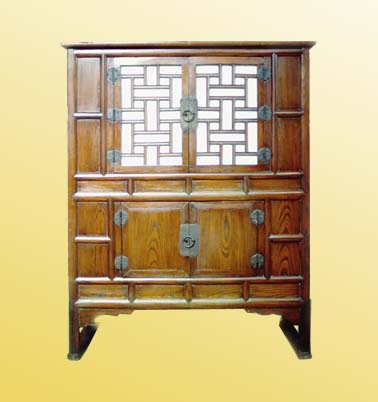|
This jang was originally used as a kitchen cabinet, but the more elegant
ones moved into other parts of the home in the twentieth century. Even
without the more elegant fittings used on the other chests we have seen
in these pages, its mirrored panels (see the black persimmon
nong and the zelkova jang ) and rice-papered
lattice doors make it decorative enough for the bedroom or dining room.
Rice paper (which is actually made from the bark of the mulberry
tree) was applied to the lattice doors to provide air circulation and
minimize the effects of the kitchen's dampness. Later generations replaced
the paper with glass, which of course defeated the ventilating function
of the paper. More recently, the glass has been replaced by paper -
but now the paper is not needed because the chest is no longer in the
kitchen! The paper is now used to satisfy aesthetic and nostalgic purposes.
If you look close at the ribs below the doors you can see a slight discoloration
of the grain. This would seem at first to be caused by the salt in drippings
from sauces which settled here over many years, but the discoloration is
on the second rib below the doors, not the first rib. So this is still
a mystery.
|


